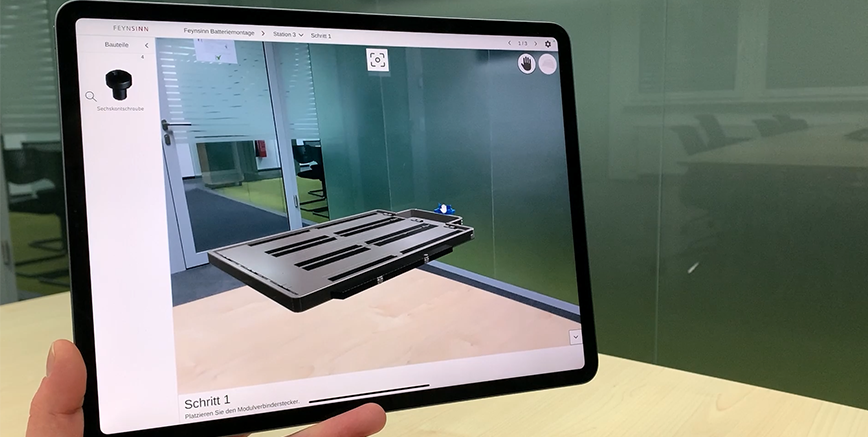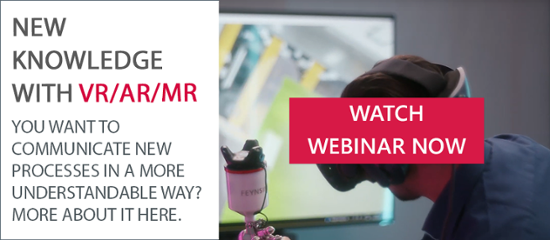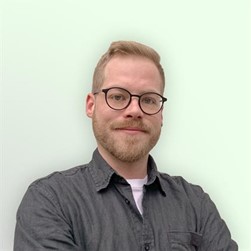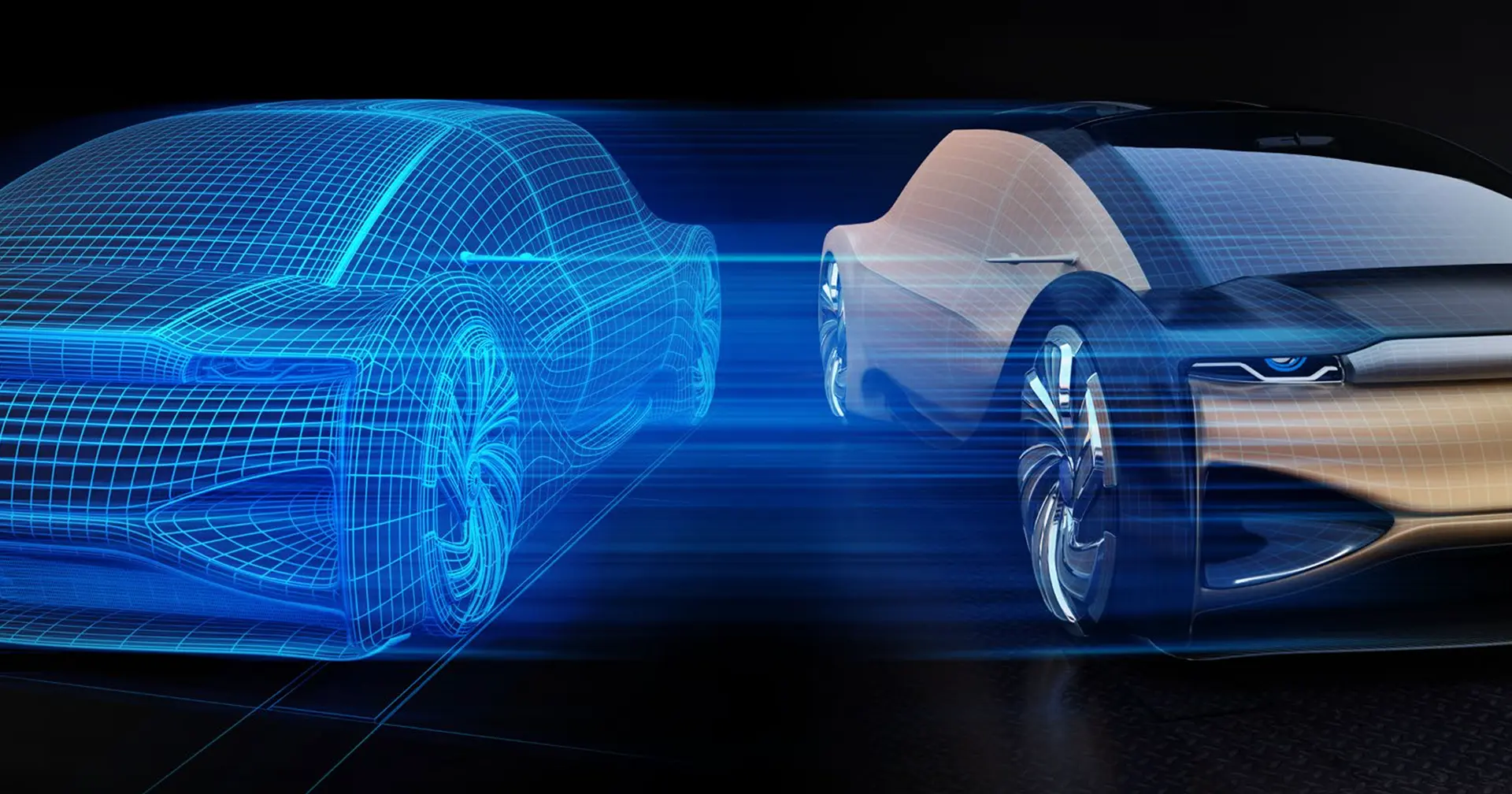For some time now, VR, AR and MR applications have been ushering in a new era in knowledge transfer. These visualization technologies make it possible for complex matters, products and technologies requiring explanation, but also new processes, to be described in a way that is both comprehensible and easy to remember. Combining real special accessories or tools with the virtual application makes it easier to retain what has been learned.
Virtual reality, augmented reality and mixed reality have long since established their value in industrial use, particularly in education and training. The scope of possible applications covers more than just instructions for operating machinery. New perspectives are also opening up in assembly, maintenance ans quality assurance.
Modern visualization applications are now also finding their way into some of the emergency services, fire services for example. In order to be prepared in the event of an emergency, the firefighters practice situations that very seldom occur in real life, or involve a great deal of trouble and expense.
Never before has it been so easy to impart knowledge and train people. Established learning methods are not so much replaced as enhanced by the use of the new visualization methods. Companies and organizations benefit in many ways by using these technologies.
Classification of Virtual Reality, Augmented Reality, Mixed Reality
But first things first: Virtual reality and augmented reality are now common terms. Mixed reality, too, is becoming better known. The differences, however, are less well known.
Most people know what virtual reality is. Virtual reality describes complete immersion. This means that no images from the physical world are shown in the virtual world. People using a VR application, are unable to perceive anything which is optically or visually real.
This is not the case with augmented reality, where real surroundings enhance the virtual environment. "Feature points" are used to reference the environment. Distinctive points are recognized. The system calculates a 3D environment which integrates the exact positioning of virtual objects in the real environment. AR is defined as the projection of information and holograms in our direct surroundings.
One typical, well-known example is the head-up display (HUD) in networked vehicles. HUDs provide the driver with important information in his or her field of view. The external view of the traffic situation is enhanced by the addition of virtual information, e.g. speed displays or the display of directional arrows in the navigation, in exactly the right lane.
Mixed reality is not as well known. MR is easily confused with augmented and virtual reality, and there are areas where they overlap. Mixed reality describes the interactive transition from the real to the virtual environment, and enables existing spaces to be extended with haptic elements. This means that an interaction in the virtual world has an effect on the real world, and vice versa. An actual robot arm moves as soon as a button is pressed in the virtual world. Or vice versa: A button is pressed in the real world and a gate opens in the virtual world.
In knowledge transfer, all three visualization technologies provide clear advantages.
Possible applications are almost endless
Production planning
AR applications are suitable for redesigning existing plants. They can provide valuable assistance when new models or variants are being integrated, but also when sites are being extended or new plants planned. The application helps employees in planning: with the exact location of workpieces, for example. It provides important information for the precise planning and evaluation of production processes.
Augmented reality is used to superimpose content in the form of instructions or videos on the real environment. The information can be shown and hidden. If an object exists in digital form, the workpiece can be viewed from the desired angle, using the 360-degree view. The objects can be scaled, freely positioned or enhanced, for example by adding a cross section or an animation which illustrates how they work. The planner is standing at the "virtual" conveyor belt, and can get a detailed view of components. Cycles, for example, can be run through in this way. Errors which are not visible in the planning software are detected.
The behavior of robots can also be demonstrated flexibly and safely. Before entering the real production line, for example, workers can familiarize themselves with all functions.
Production quality is guaranteed from start of production. The result: Production startup without any need for corrective measures.
Assembly
In the assembly shop, work processes can be trained live on the vehicle. The necessary information is displayed in the superimposed messages. They can be fast-forwarded and rewound as needed. The AR application can be used to train various processes, for instance "How do I install an electric motor?", "How do I check whether the battery has been correctly fitted?". Skilled workers learn assembly operations such as clipping in place, positioning workpieces, screw connections, etc., all at various levels of difficulty. From now on, the trainer has time to supervise more than one employee at a time. 
Quality assurance and quality inspection
The modern technologies can be used as a technical platform for quality control. Real time data and measured values are fed into the application and issue direct feedback. Critical situations and problem cases can be run through. Quality auditors detect non-conformities and errors, and can keep reliable records of these.
Maintenance
In the maintenance department, an AR application can be used to train new employees, to enable them to acquire the knowledge and skills needed to perform maintenance tasks correctly. Using an AR application, employees are taken through the tasks step by step, and receive the information they need through AR glasses.
Emergency situations
Firefighting serves as an example here: fire services ensure our safety. In order to be able to act competently and correctly in an emergency, the emergency services need to practice many different scenarios. As a rule, such training sessions involve numerous requirements: a fire container and expendable materials that can be set on fire and extinguished are needed, special safety requirements have to be met, and the appropriate equipment is needed.
VR applications allow the fire services to carry out efficient tactical training. Firefighters can practice rare phenomena in a safe environment and hone their firefighting skills. They are independent in terms of time and place, and can repeat the training as often as needed. This provides greater safety for the emergency services and anyone involved in a fire.
Unique: VR, AR, MR applications with integrated special equipment and tools developed by our Feynsinn team
To stay with the example of firefighting: it is essential for firefighters to practice how to use a typical hose jet, so that they can gain the experience and routine they need. The firefighter is familiar with the hose jet.
Our Feynsinn team has converted the special tool for VR application into an electrified hose jet which can reflect the precise measured values in the application. An integrated feedback system provides information on tactical errors, water consumption, tilt angle and the time required. The "VR firefighting trainer" application provides realistic conditions for training emergency service teams to think and act in a controlled manner and to apply respiratory protection measures in an emergency. 
Although a virtual training session can never fully replace the physical training required for firefighting, VR training is a way of preparing firefighters so that their training no longer needs to focus as strongly on real-life fire scenarios.
Virtual painting is another example. With the help of a virtual painting system, also developed by our Feynsinn team, manual auto body painters can practice manual application without using real materials. In a virtual paint shop, the body painters are trained in the painting process using a real paint gun. For this application, Feynsinn converted a real paint gun.
The painters use digital painting parameters to set the spray pattern, paint flow rate and air pressure. When the trigger on the paint spray gun is pulled, virtual paint and paint mist flow out of the virtual gun and the coating process begins. Real-time information is supplied on the paint thickness, spray angle and speed. A distance jet shows whether the distance between the part and the spray gun is accurate. The menu can be used to request information on adequate paint cover, paint consumption, spray gun handling, speed, or divergences from the ideal painting process.
Conversions of special equipment and tools are carried out in-house in our company. EDAG and Feynsinn are able to electrify the tools and install them along with sensors in such a way that they are authentically and haptically reflected in the application. This is unique and makes for an almost realistic experience.
Visualization technologies promote the development of knowledge, help to consolidate what has been learned, save time and cut costs
The advantages of VR, AR and MR are evident: realism and immersion. The use of visualization technologies guarantees sustainable learning. The steps are trained interactively and on-demand. The risk of errors is reduced.
10 advantages at a glance:
- Visualization makes knowledge tangible.
- The visualization technologies make it possible to interact intuitively with the simulated 3D environment.
- New processes can be trained in an exploratory way. No special instructions are needed to be able to use the visualization methods.
- Specific attention can be paid to certain scenarios.
- Everybody has his or her own experience. People are not taken through a text book.
- Situations that in reality involve a great deal of time and effort can easily be run through using virtual means.
- Real-time feedback helps to reinforce what has been learned and increase learning retention.
- Complex subject matter can be presented, and this can be remembered and used for a long time.
- The cost of and time for real training are saved.
- Planning factors are no longer necessary, e.g. for special structures.
Despite the many advantages, one obstacle remains, namely implementing the digital world into the physical world. The countless virtual image, text and sound contents in the applications need to be created and implemented. Companies and organizations must therefore assess the purposes to which the applications are to be put and decide which situations to simulate. Initially, the preparation of all the data necessitates additional expense.
In our opinion, there are many applications in which the use of VR, AR, MR proves to be an effective tool. The visualization technology available today is powerful enough to represent virtual objects and environments in such a way that they appear to be real to the viewer.
Our Feynsinn team has been using modern visualization methods for more than 10 years. Depending on the application concerned, we jointly develop VR, AR and MR applications using tools such as DELTAGEN, PIXYZ, Maya VRED the Unity and Unreal game engines.
Want to find out more? In the webinar "VR, AR and MR – New Dimensions of Learning", our colleague David Krick takes a close look at the new visualization technologies and provides practical tips. 





